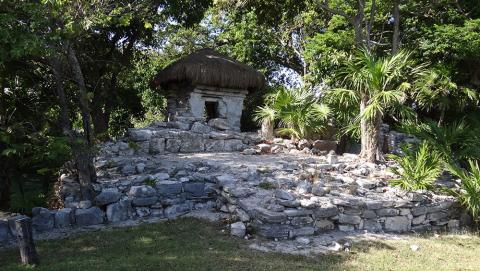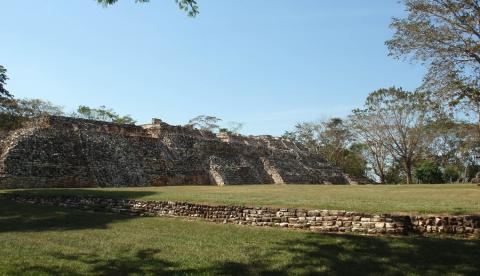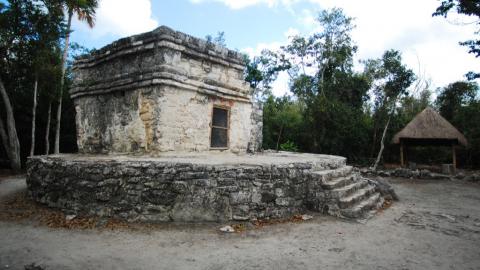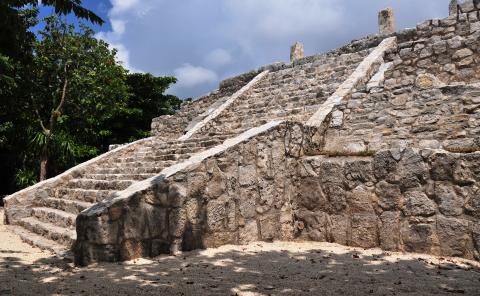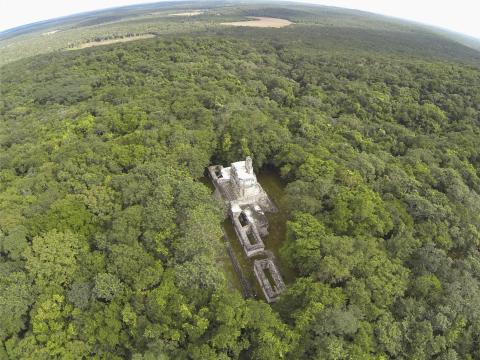
View PDFMostrando 97 - 108 de 134
Región cultural Maya
Playa del Carmen (Xamanhá)
One of the first Mayan settlements seen by the Spanish conquistadors in 1518, opposite to the island of Cozumel. Its Maya name means “water from the north.” There are eight groups of small buildings lined up between the beach and the jungle; there are fragments of paint and one of the last Mayan…
Playa del Carmen (Xamanhá)
One of the first Mayan settlements seen by the Spanish conquistadors in 1518, opposite to the island of Cozumel. Its Maya name means “water from the north.” There are eight groups of small buildings lined up between the beach and the jungle; there are fragments of paint and one of the last Mayan…
Pomoná
Rich stelae, sculptures, tablets, and hieroglyphic inscriptions allow us to learn about its governors and the relations it had with other cities in the region. An independent political entity (600-800 AD), it played a vital role in the trade along the Usumacinta River.
Pomoná
Rich stelae, sculptures, tablets, and hieroglyphic inscriptions allow us to learn about its governors and the relations it had with other cities in the region. An independent political entity (600-800 AD), it played a vital role in the trade along the Usumacinta River.
San Gervasio
The principal Maya city on the island of Cozumel, founded 17 centuries ago, it was part of the intense trade and political network of Chichen Itza. The housing and religious complexes explored to date, together with the altars and pyramids, testify to its importance.
San Gervasio
The principal Maya city on the island of Cozumel, founded 17 centuries ago, it was part of the intense trade and political network of Chichen Itza. The housing and religious complexes explored to date, together with the altars and pyramids, testify to its importance.
San Miguelito
An ancient city, eight centuries old, where explorers found an impressive palace of the god Chaac, almost 50 burial sites and a great variety of artefacts, some local and others imported from afar (made of obsidian, quartz, ceramic, coral and conch shell), testifying to its commercial importance…
San Miguelito
An ancient city, eight centuries old, where explorers found an impressive palace of the god Chaac, almost 50 burial sites and a great variety of artefacts, some local and others imported from afar (made of obsidian, quartz, ceramic, coral and conch shell), testifying to its commercial importance…
Sayil
Notable settlement in the Puuc region, with examples of the particularly fine Puuc architectural style. Remarkable for the Great Palace or North Palace, which displays portions of consistent facades erected at successive stages, over a period of twelve centuries.
Sayil
Notable settlement in the Puuc region, with examples of the particularly fine Puuc architectural style. Remarkable for the Great Palace or North Palace, which displays portions of consistent facades erected at successive stages, over a period of twelve centuries.
Tabasqueño
Monumental architecture in the Chenes style, the principal structure or Palace-Temple has a superb facade with designs of animals. Its inhabitants had incredible skills for supplying water to the community by drawing from two springs deep in caves as well as constructing a series of chultunes (…
Tabasqueño
Monumental architecture in the Chenes style, the principal structure or Palace-Temple has a superb facade with designs of animals. Its inhabitants had incredible skills for supplying water to the community by drawing from two springs deep in caves as well as constructing a series of chultunes (…

